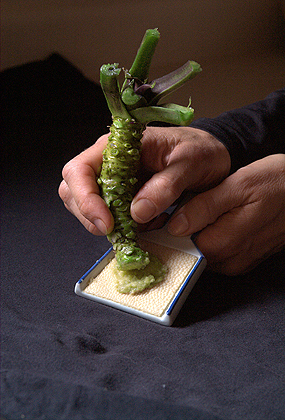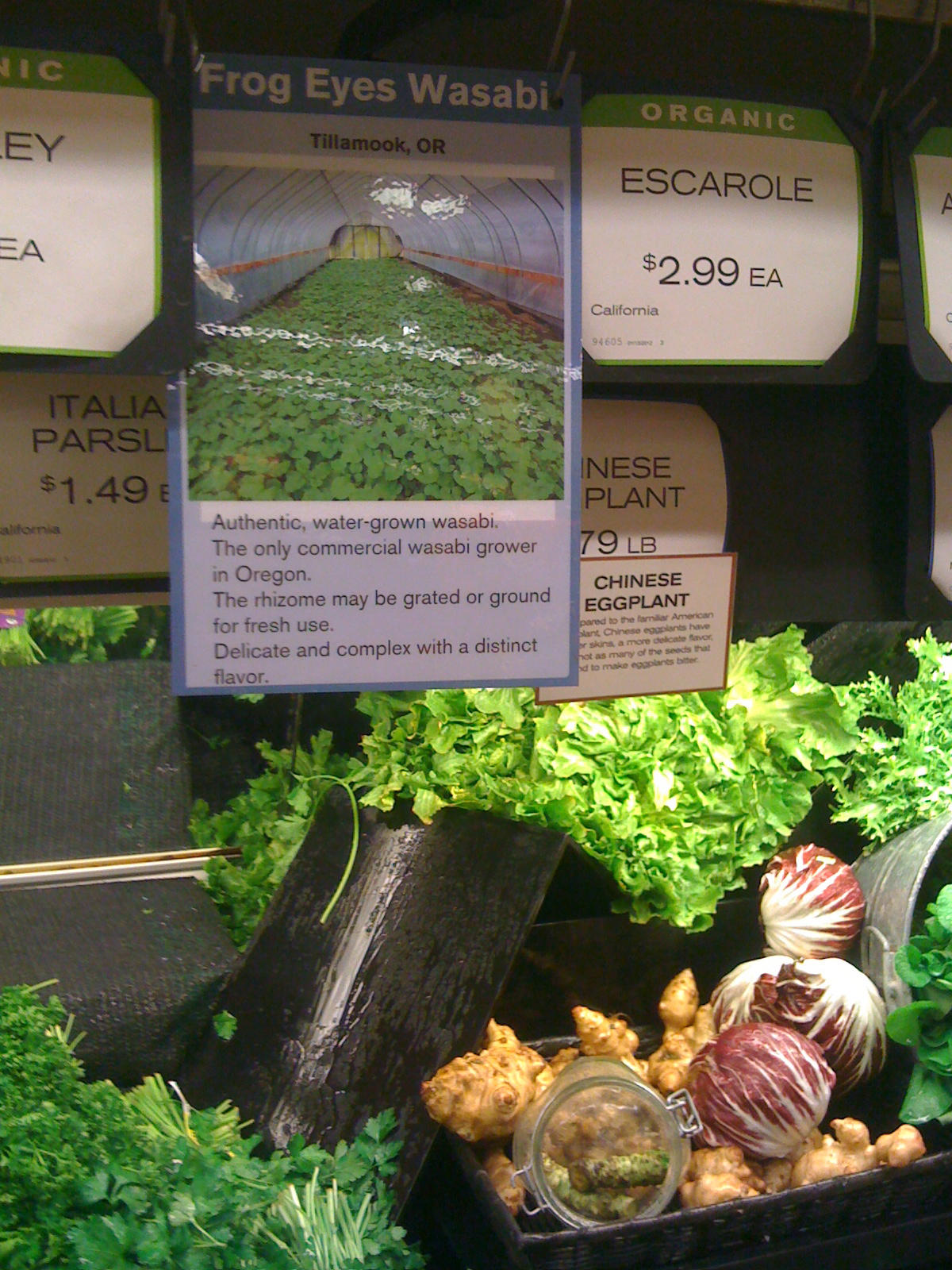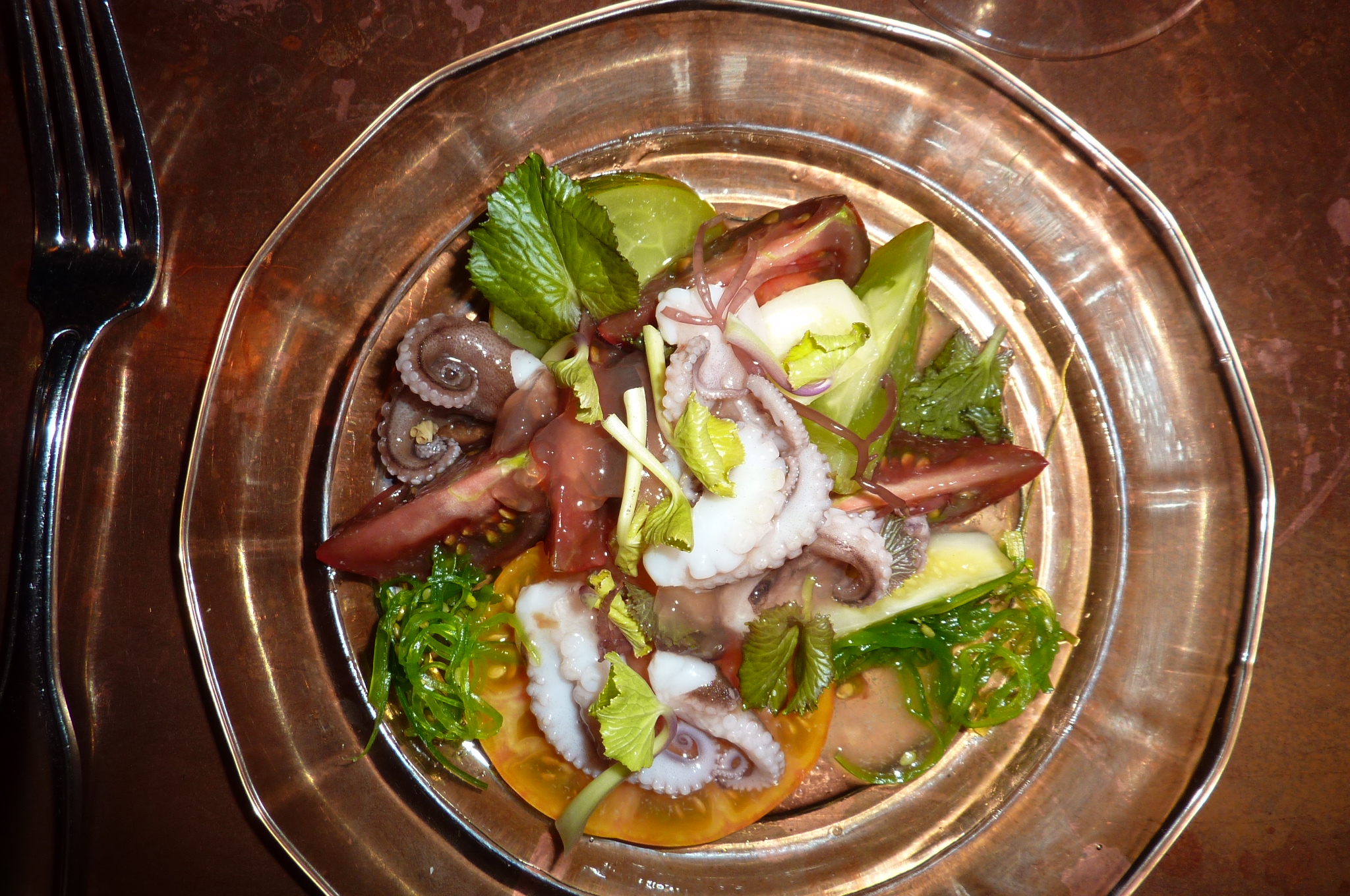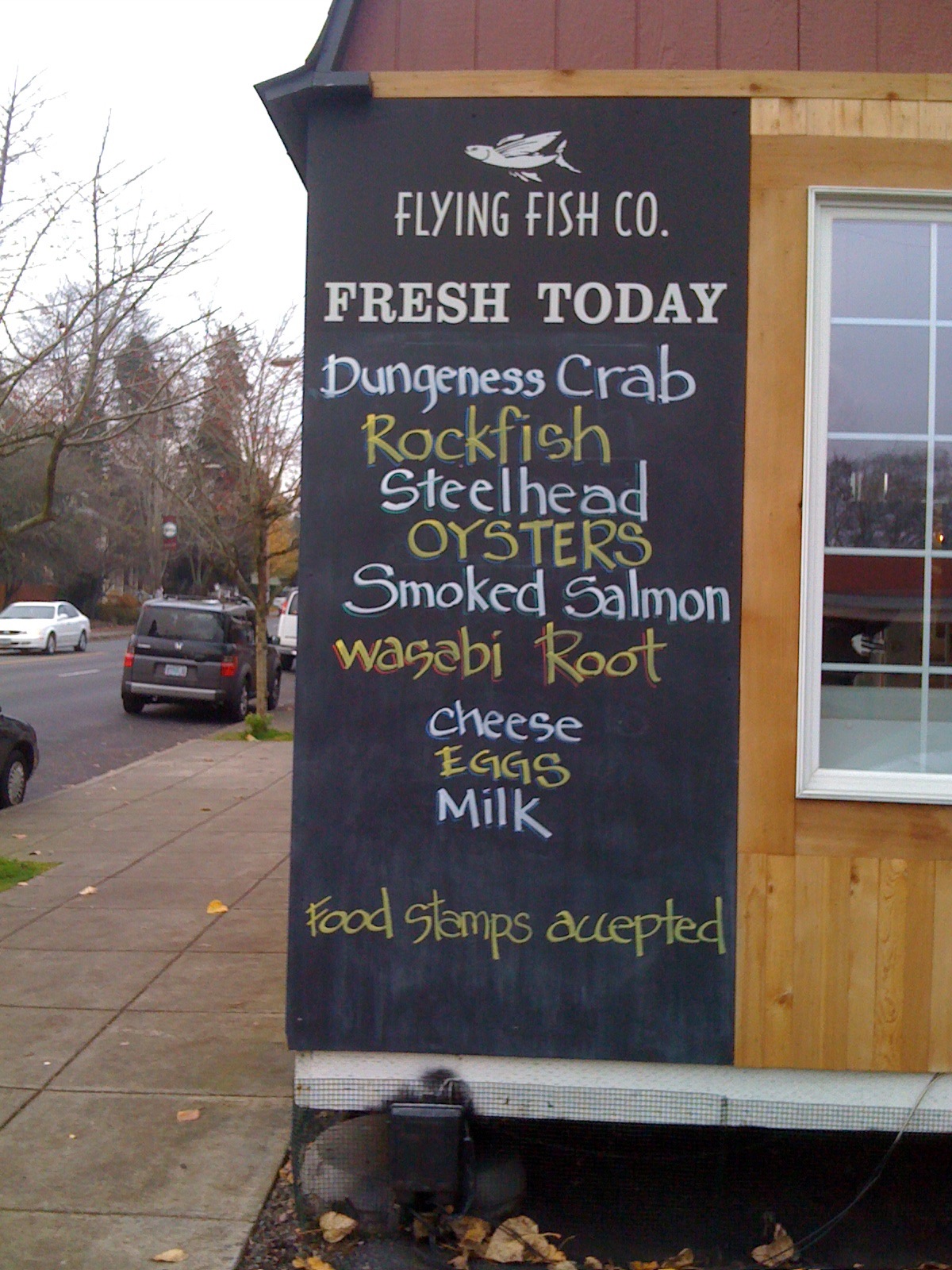My what a busy week! Last week we attended two food /culinary events. The first was the Fisher Farmer Chef Connection on Monday and the Edible Portland local hero awards on Wednesday. Our wasabi was prepared by an amazing chef at each event. At the Fisher Farmer Chef Connection, Chef Rachel Yang of her restaurant Joule in Seattle, a James Beard nominee for best new chef, made an Albacore Tuna Rice Bowl with Fresh Wasabi Gremolata dish for all 200 attendees. At both events, we enjoyed the ultimate satisfaction a farmer can harvest; offering the product you’ve grown and producing smiles on the faces of the diners. One of the diners commented to us that as a butcher and rancher he tasted the opportunity of using wasabi to enhance meat dishes such as steak and pork.

At the local hero awards, David Padberg was our hero once again. He made a steak, wasabi, red onion construction drawn by a wasabi puree all in a hand-held lettuce leaf cup “dish”. Of course it was amazing. The common denominator here is wasabi paired with some form of steak (albacore and beef in these cases). I realized that steak and wasabi have quite a bit in common. The more I thought of this, the more I wanted to share this tasty combination.
Both steak and wasabi should rest for some time after preparation and prior to consumption. Steak should rest for approximately 5-8 minutes after being removed from the heat. According to Anthony Bourdain, don’t cut into steak, don’t serve it hot; do not touch the steak; walk away. Let it be, let it be. It will continue to cook and become juicier if left alone. Wasabi should be ground, pressed tightly into a dish and let sit for several minutes before consuming. The heat and flavor will change, become richer, more rounded, hotter and smoother if allowed to rest for a short time.
Wasabi is hydrohillic. The heat and flavor evaporate after the rhizome is ground and exposed to air or water (the hydrogen in the air – thus ‘hydro’ phillic). It likes some reactionary minutes (call it “cooking”) to generate more heat and flavor.* Not surprisingly, the magic happens within 5-8 minutes after grating; the same time that the steak should rest.
This pairing is so good, I have not yet had steak – any steak - without wasabi since my first bite. It’s amazing and I’m not just saying that as a wasabi farmer. I’ve also tried it with albacore tuna steaks, pork loin and roast, turkey (both breast and deli slices, a la carte and in sandwiches), and roast beef. With each accompaniment, the meat’s flavor was enhanced.
With this in mind, here are instructions for one of the culinary worlds’ great pairing.
- Grate wasabi.
- Pretend it’s playdough and compress with hand into ball or corner of bowl.
- Wait – drink a glass of wine or sake or beer
- Serve
- Put the corner of your fork in wasabi, acquire as much as you like
- Cut steak piece
- (Optional) dip steak in soy sauce. Do not put wasabi in soy sauce. It will become cement and lose all flavor.
- Kampai!
*This release only happens after the cell walls are broken. In root form, the flavor and heat is retained for months as long as the rhizome is damp and cold.
The following is a list of Portland-area retailers that currently carry fresh wasabi. They also sell steak – good steak and seafood. The photos show how the rhizomes are sold. You should be going now…..
- Uwajimaya in Beaverton
- The Flying Fish Company (SE Hawthore)
- MASU (Downtown) Ask for the "Chef's Choice" to get fresh wasabi
- New Seasons Market (Raleigh Hills, Seven Corners, Cedar Hills, and Fisher’s Landing)
The following photos show how the wasabi rhizome is displayed for purchase:












